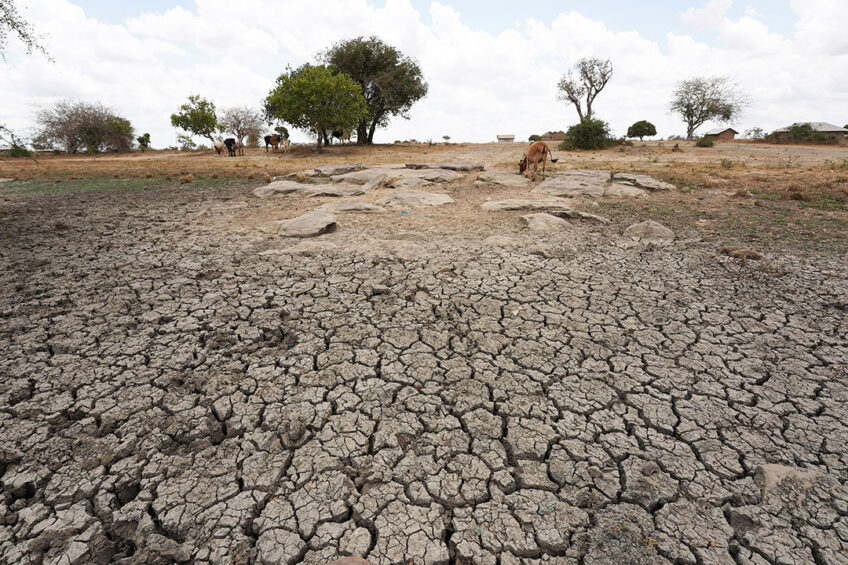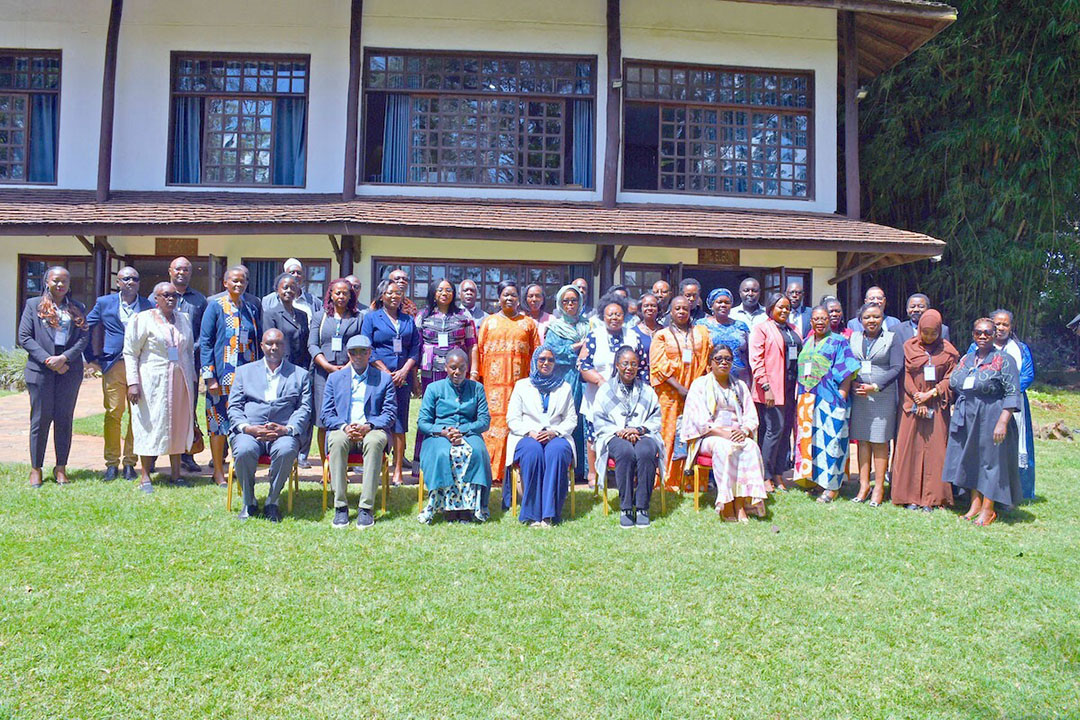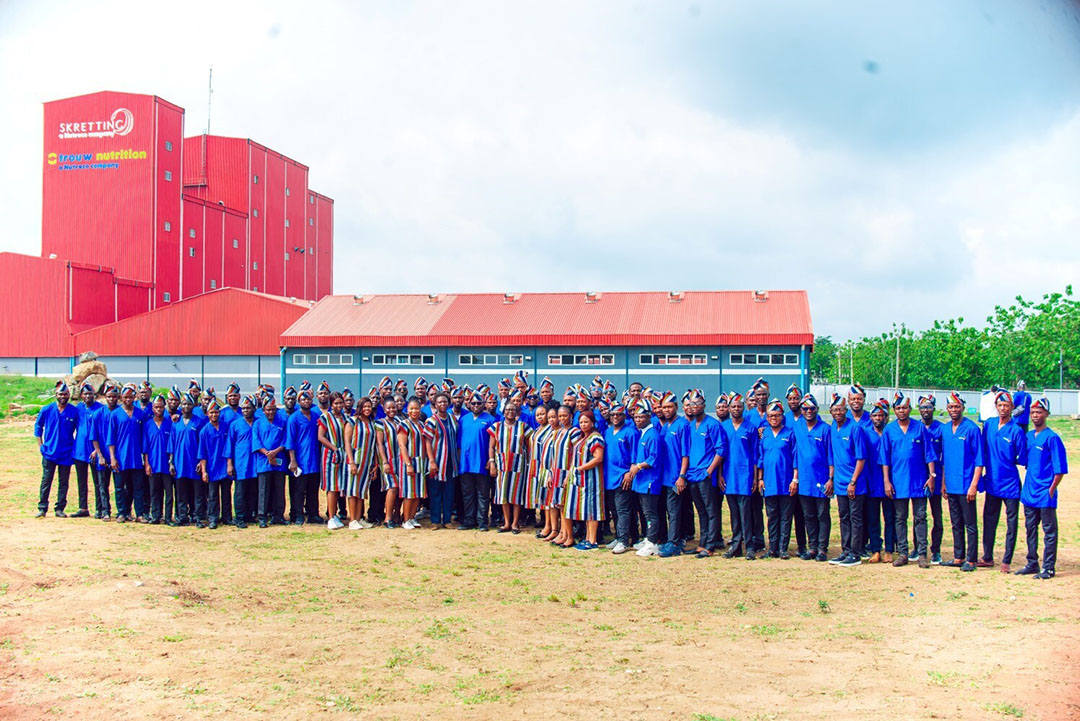Initiatives to address feed shortages in Africa

Livestock feed and fodder are in short supply across many areas of Africa. Kenya and Uganda, for example, are currently each grappling with an approximately 60% annual feed deficit. Here we take a look at initiatives designed to combat severe feed shortages.
This crisis, as many media outlets in Africa have reported, is due to drought, the effects of Covid-19 and the Russia-Ukraine conflict.
Drought – almost 9 million animals lost
Due to drought, losses of livestock in the Horn of Africa region in the last year or so have been severe, with almost 9 million animals lost (over 2 million alone in Kenya). This level of animal death has not just put livelihoods and human lives at risk, but also represents the loss of precious genetics developed over decades for and by smallholder farmers who produce most of the meat and milk for Africans.
RAFFS project
However, a pilot programme is now underway to address shortages of animal feed and fodder. The Resilient African Feed and Fodder Systems (RAFFS) project, funded by the African Union Commission and the Bill and Melinda Gates Foundation, is now starting in Kenya, Uganda, Somalia, Zimbabwe, Nigeria and Cameroon. RAFFS “emphasises the need for a coordinated, inclusive and strategic approach to make a lasting impact on the sector and the lives of the millions who depend on it.”
Specifically, RAFFS focuses on “enhancing analytical capabilities for data-driven policymaking and attracting investments, scaling up effective existing approaches and innovative models, and fostering partnerships for coordinated efforts to drive impactful immediate and short-term investments.”

Initiative to support women in the feed sector
In addition, African Union-InterAfrican Bureau for Animal Resources is supporting the ‘African Women in Animal Resources Farming and Agribusiness Network,’ which aims to ensure women’s significant participation in the feed and fodder sub-sector.
Regulatory reform
There are also legislative changes happening that will hopefully support feed industry development. In February 2024 for example, the government of Uganda passed a Feed Bill with components that are designed to ensure minimum standards for feed production. Any entity seeking to engage in the production, storage and sale of animal feeds must apply for a licence. The new law prohibits contaminants in feed and also outlines safety measures for feed transportation. Among other additional items, there are also now testing requirements required for feed export with a list of the approved animal feed control labs forthcoming.
Dr Wamalwa Kinyanjui, Animal Health Expert at the Intergovernmental Authority on Development’s ‘Centre for Pastoral Areas and Livestock Development’ (ICPALD) in Nairobi Kenya, notes that regulations are important for quality control. “Although it may slow things at first, this Feed Bill will streamline operations and safeguard ethical investors from unscrupulous investors (fake products) as well as protect consumers,” he says. “When this happens, it benefits all.”
For her part, RAFFS Project Coordinator Dr Sarah Ashanut Ossiya notes that, while RAFFS is in its early stages, the implications of recent policy and regulation reforms, as well as mapping potential solutions and examining business and investment opportunities “is where the project is moving towards.”
Emergency response
Ossiya also points out that urgent recommendations for dealing with the continental feed shortage crisis were recently presented at the African Union Summit. These include plans to enhance emergency response within the feed and fodder sector, the establishment of a continental ‘African Alliance of Multi-Stakeholder Feed and Fodder Associations’ to guide the growth of more robust African feed and fodder systems, and the creation of a monitoring and mutual accountability framework that generates an annual status report. At the Summit, it was also recommended that guidelines be created to help support the development of the feed and fodder sector.
East Africa Feed to 2037
On the subject of feed industry development, in 2023 ICPALD released the Eastern Africa Livestock Feed and Feeding Strategy (2023-2037) (EALFF). This was developed through consulting with many stakeholders across East Africa, by a team of experts from various institutions and organisations including Dr Agyemang Kwaku, Prof. Harinder Makkar, Dr Ricarda Mondry and Dr Ameha Sebsibe.
The strategy addresses specific challenges in ten countries covering four aims:
- to determine feed and water availability and accessibility, and implement technical solutions to enhance them
- to develop and implement appropriate feed processing, feeding strategies and water provision approaches
- to develop and strengthen agri-feed businesses
- to develop and strengthen institutional, policy-formulation and research, and human capacities in feed production and feeding.
Among constraints identified in the strategy to produce adequate animal feed is the low availability of diverse feed resources such as quality supplements and vitamin-mineral mixes. Another constraint is the feed sector’s neglect by policy makers and planners, resulting in low private investment.
Investment helpful
At the same time, the EALFF strategy authors also note that “partnerships between public and private sectors, and where appropriate multi-stakeholder partnerships, would bring remarkable improvements in producing quality and safe animal feeds. The opportunities for investment are enormous.”
Kinyanjui says there “is a big role for international companies to invest in feed processing.” In his view, their decisions about what investments to make and where should follow a review of the policies and enabling animal feed environment in various countries and assessments of the ROI in this space as well as the internal rate of return.
“All countries are eligible for investment, knowing that there is a lot of feed demand and cross-border trade between them,” he says. “However, initial assessment by private companies will help show which country offers much better opportunity for investment, looking at other private companies that have already invested in animal feed industry. Assessors should identify gaps to be filled in order to gain market entry and compete sustainably.”

One innovative idea for increasing compound feed production in Africa is a feed factory in a box concept being developed by Nutreco (Trouw Nutrition). Nutreco has received a US$4.8 million grant from the Bill & Melinda Gates Foundation “to accelerate the implementation of localised, sustainable complete feed production. The grant will directly fund 21 Hendrix4U complete feed production projects initially in Ghana, Ivory Coast, Nigeria and Uganda.” Kinyanjui views the feed factory in a box concept as “a good idea and the best way to go. It should, however, be preceded by thorough analysis of supply and demand (the market) to mitigate risks.”
Alternative ingredients
The EALFF Strategy also recognises the potential of insects such as black soldier fly and house fly larvae in animal feed, as well as single cell protein, algae, spineless cactus, by-products of the biofuel industry, prosopis pods, and vegetable and fruit wastes from food processing and wholesale markets.
Source: The Eastern Africa Livestock Feed and Feeding Strategy (2023-2037)











